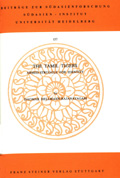* indicates link to
Amazon.com
bookshop on line
 From
the Conclusion:
From
the Conclusion:
"... Though a diagram would show LTTE as standing alone and independent
from all the other groupings, this is of course not quite true.
Communication lines and common features at intersections between LTTE and
other groups do exist, but these connections are extremely loose and LTTE
would never allow these connections or questions of party loyalty to hamper
a course of action they have embarked upon and consider vital. The argument
works also the other way round: LTTE would not let political or ideological
differences stand in the way of cooperation if this suits their political
objectives, provided they could keep control of the process as a senior
partner.
Another point is even more important: As we have seen, quite obviously
LTTE represent a strand of political will and thinking which is extremely
strong and entrenched among the Tamils: a very conservative society with a
deep feeling of its own worth and national/ethnic pride is much more easily
swayed by national appeals and arguments even if they come wrapped up in
socialist terminology, connected with a certain amount of social discomfort
and upheaval, than by Marxist visions of world revolution and the equality
of humankind.
The socialist stance, sincerely as it is peddled, is at best a thin
veneer over a profoundly indigenous and national movement. Yet at the same
time, aims of equality and social justice have been realised best by LTTE
who are as mixed by caste and religion as one could wish. And there lies
another source of LTTE's strength: the undoubted support of the movement
depends on the mixture of deep loyalty to the culture and history of the
Tamils and an attempt at social reform. This loyalty to history and
tradition is revealed in the various ways described...
While the
other groups claimed support and assistance from the population, LTTE was
the only group that could prove to have grassroots support and influence, a
support which enabled them to achieve military control. This was not solely
based on military superiority, which is, after all, a relative concept, but
much more on the ideology of the survival of the
Tamil race,
Tamil nation,
Tamil language,
Tamil culture and
Tamil
homeland...
Without doubt, the pattern of Tamil nationalism in Sri Lanka
shows may similarities to other independence or liberation movements,
especially in its arrangement of liberation groups and their ideology and
the return to a glorious past which is recalled in sentimental terms. But
the reason for the success of this particular strand of ideology (a fact
which could become dangerous if Eelam is achieved) must lie somewhere in the
direction Tamil culture took in the past, which determines the shape of
Tamil nationalism of today.
This is the direction in which we have to try to marshal our
research and our argument. There are more questions than answers here, and
the answers may take a long time coming, since research on the Tamil
militants has only just begun. But they are necessary questions if we want
to come to a just evaluation of the role and significance of these militants
in the context of Tamil society and Tamil politics. Kapferer's deterministic
conclusion that violence is inherent and constitutive in Sinhalese ontology
and cultural concepts is debatable in the Sinhalese context, and certainly
not applicable in the Tamil case, the present cult of violence by the LTTE
notwithstanding.
And what have the Tigers gained? Blood, sweat and tears, military
control of Jaffna and a reputation for determination, tenacity, fanaticism
and ruthlessness. On the negative side, isolation, loss of world sympathy
and revulsion after Rajiv Gandhi's death and the loss of their fall-back
bases and supply lines in India. All LTTE's successes up till now have been
achieved out of the barrel of a gun, but can this go on?
One day the Tigers will have to enter the political process.
And that is the point: experienced fighters they are, whether they are
clever politicians is open to doubt. This is not at all a problem of
intellectual ability, but of political naivete and inexperience which the
Tigers display to a quite unbelievable degree. It says a lot for them, that
a group of militants not versed in the wiles of their lawyer elders have
come so far at all, but that does not lessen the difficulties. It was easy
to take Kokkavil and Mankulam, to drive the army out of Jaffna Fort, but it
is quite a different task to get normal life going again. LTTE admit openly
that they have great difficulties there. And in order to guard against their
own mistakes and others taking advantage of them, they will keep their
weapons and for the present rely on force majeure.
Prospects for
peace in Sri Lanka look grim indeed. The situation is tragic not only for
the Tamil population, but the members of LTTE themselves, too. It is the
tragedy of the Sri Lankan Tamils' schizophrenia, torn between Sri Lanka and
India in the search for their identity. They have a
choice of identities and histories to draw upon, but instead of offering
a chance and providing a means of transcending ethnic or linguistic
boundaries, this choice of identities and pasts has become their greatest
problem. It causes them to
veer wildly
between India and Sri Lanka, alternately rejecting both and being
repulsed in turn. This is the Tamils' own ethnic hell, and the real tragedy
is that
Satyendra and even the LTTE
saw what was coming, but were, for all their attempts, powerless to prevent
it."